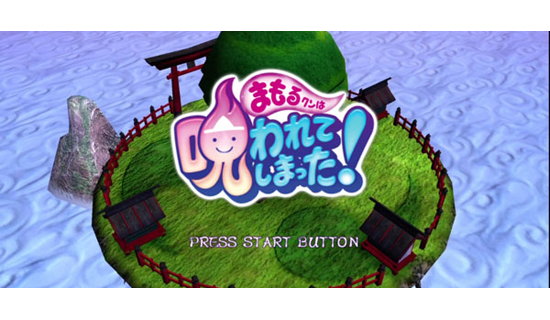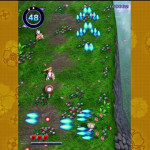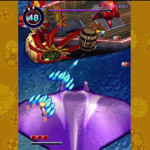“Mamonoro” (the shortening of this game’s full title, something that Japanese gamers love to do) is a shooter/shmup that was originally an arcade game running on Sega’s NAOMI hardware, released in July 2008. While the XBox 360 may not have ever sold that well in Japan, it did quickly find its place among hardcore shooter fans not long after its Japanese release. So it really is no surprise that this title was ported to the 360 not even one year after its arcade release.
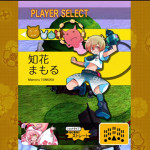 | 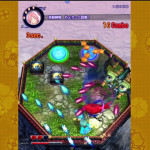 |
| Very nice colorful graphics on the character select screen | Some of the enemies in this game are just crazy. They include giant fish… |
As was a trend in a good amount of shooters by this time, Mamoru is very anime-inspired. The character designs have a cutesy look to them, and appear to have come right off of the screen of a popular, pseudo-moe anime show (we won’t hold the moe part against this game though). Any shooter fan of old that picks up this game will immediately notice that it owes a lot to Taito’s Kiki Kaikai (or Pocky and Rocky) series in that it is a primarily vertical scrolling shooter, but it doesn’t actually scroll until you move your character across the screen. You’re able to shoot in all eight directions, a small amount of branching paths are present in levels, and the settings and music feature plenty of themes based around Japanese youkai (demons and ghosts) and mysticism in general. All of these features are Kiki Kaikai trademarks. In fact G.rev, one of the developers, were not only well known for high quality shooters at this point but also spun off from Taito originally. So if you’re a fan of that series, this one may excite you even more.
One thing that Mamoru has over the older Kiki Kaikai titles though, is the fact that the game controller has evolved to include two analog sticks. So if you are willing to go into the options and change the controls from the default settings, Mamoru suddenly becomes a twin-stick shooter! I would highly recommend doing this, as it makes the game much less frustrating to play than trying to re-position your character to shoot in the direction you want with only one analog stick. Since most shooters these days seem to have a unique mechanic to them, Mamoru’s is the ability to curse, as the name of the game implies. Apart from your fire button (only needed if you’re using a single analog stick), you also have a curse button which can be charged up to three levels. No matter what sort of curse shot you send out, it always clears all standard bullets from the screen, but there are other intricacies to this system.
In the event that a non-charged curse does not hit an enemy, it creates a curse field. If any regular enemies, or even your character, enter this field they are cursed. When regular enemies are cursed they become confused, changing their movement and attack patterns. This actually makes them stronger! The advantage to cursing an enemy before you defeat it though, is that you get better items and a better score from defeating them. If you move your character into a curse field, your movement speed increases and your shots become stronger. However you cannot fire off another curse shot while you are in a cursed state.
If charged, the curse shot will pierce through any obstacles or regular enemies of lesser power, or will just simply curse stronger enemies. Since there are two levels of charge, obviously each one will effect stronger enemies differently. Either way, the results are the same as the non-charged curse shot in that a curse field is created. In this case, the field deals continuous damage to the enemies within. One difference here though, is that you cannot curse yourself with a charged curse shot.
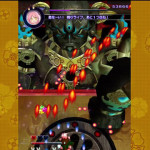 | 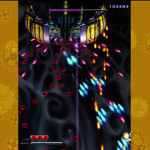 |
| One of the game’s cooler looking bosses | One version of the last boss: Less interesting to look at but much more challenging |
Even if you don’t choose to take advantage of the complexities of this system, there is still plenty of enjoyment to be had from playing this game without using curses at all. The 360 port of this game features two modes: Arcade and Story. Arcade mode is simply a direct port of the original arcade game. You select from one of five characters (Mamoru, Mayuno, Kinya, Beniko and Fururu), each of them having their own unique shot patterns and firing placements. You then have to get through five stages of varying difficulties before arriving at the final boss. Depending on factors such as your remaining time in a level at completion, you can unlock additional boss stages as well. The difficulty of this game is not too terribly hard, as modern shooters go. While I wouldn’t call this a bullet hell shooter, there are some complex bullet patterns to weave your way around during some of the later bosses. This is where using the curse mechanic can really save you!
The Story mode was added specifically for the XBox 360 port, even though it is largely built atop the Arcade mode. Here you are treated to story sequences featuring interactions between the characters before each of the five stages (you don’t select their order this time, they’re given to you in order of difficulty), complete with full voice acting. The story sequences are very simple and focus mostly on being comedic. They are amusing enough, though if you’re sensitive to moe, some of the characters will probably drive you insane. Either way, they’re perfectly enjoyable even if you don’t understand Japanese very well. The trick to this mode though, is that you pre-select an order for the characters before starting the first level. Each time your character takes a hit, you take control of the next character. The character that was just flipped out is now unusable, unless you find a heart to revive them. The game automatically saves after each completed level, and if you go through all of your characters it’s game over: You’ll be starting from your last save. The problem is that your characters never get revived unless you find the hearts to do so. So even with the save functionality, the Story mode ends up being significantly harder than the Arcade mode. The Story mode based achievements are also quite challenging to get (if you’re into that sort of thing), as they involve beating each boss with a specific character and performing a certain set of actions in each level. The 360 version also features the choice between the arcade original or new arranged music, a Practice mode, a gallery and online leaderboards.
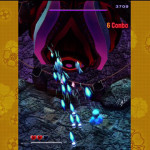 | 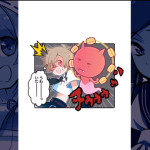 |
| The last boss that most will see, some sort of giant eye | A sample of what the cutscenes look like in the story mode |
The elephant in the room for those who haven’t played many shooters ported from the arcade to the 360 will probably be the way this game is displayed. Since it’s a vertical shooter on a system made to be connected to an HDTV, the display is severely letter-boxed. It still looks very nice, but you can’t help but wish it took more advantage of a wide-screen TV. More annoying than this though, is that the full width of the screen is not displayed at any one given time. You will sometimes be able to scroll the screen slightly more to the right or left, and if you don’t make a habit of doing this then you may very well be taken out by an enemy who was hiding in plain sight. Another minor annoyance is the load times. Even if you still this game, it doesn’t seem to make a discernible difference. They aren’t exactly Neo Geo CD long, but they’re definitely longer than your average 360 game.
Two characters were made available as DLC shortly after release in the 360 port: Nowa and Lukino. There isn’t a whole lot of benefit to getting them though unless you’re going for the extra achievements for clearing the game with them, or you just love the game so much that you want to play through it with additional characters. For those who want to play this title on the 360 but don’t care to track down the physical version, it was also made available on the Japanese Games on Demand service nearly a year after its initial release. This game is not region-free though, so if you want to play it on the 360 you’ll need a Japanese console. It should also be noted that in 2011 an enhanced and HD-ified version of this game would be released for the Playstation 3 (and also got a digital release in the west as “Mamorukun Curse!”), complete with the two aforementioned DLC characters (this version will be covered in a separate review).
I’ve always wanted to play Kiki Kaikai with twin-sticks, so this game appealed to me immediately. So if you’re nostalgic for Kiki Kaikai, love twin-stick shooters, or just want a good shooter with a moderate level of challenge, do yourself a favor and play some version of this game. If none of the above describe you, and you’re perhaps looking for a Japanese shooter that’s more of a unique show piece, you can probably pass this one up.
